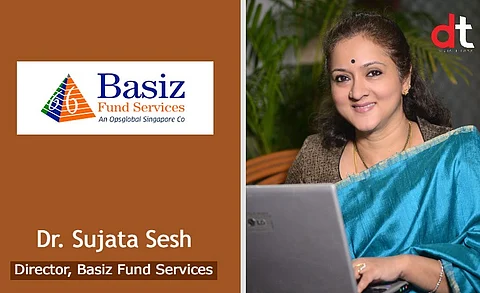

Authored by Dr. Sujata Sesh, Director, Basiz Fund Services
Advancements in technology have always propelled progress. Their adoption by existing IT/ITES products and platforms is essential for the proliferation of technology as well as for the continued life of the systems. In this lineage comes Web 3.0, which is the next iteration for the World Wide Web or WWW. While Crypto is polarising the world now, its underlying technology of blockchain without any doubt is here to stay. One of the significant expectations from this technology is Web 3.0 or Web 3. While a prototype and features wish list for Web 3.0 existed earlier, the term first used and outlined by Gavin Wood, a co-founder of Ethereum in 2014 went significantly ahead of the original blueprint. He defined Web 3 as a "decentralized online ecosystem based on blockchain”.
The first presence of WWW or internet, Web 1.0 was a collection of mostly static pages and information that could only be read. Web 2.0, which started around 2004 and continues to this day, shifted the focus to user-generated, dynamic content. However, problematically the control over the data and content therein got centralized with a small group of companies called the Big Tech - Alphabet, Amazon, Apple and Microsoft. The web as we know today is thus significantly different from the original vision of its inventor Sir Tim Berners-Lee, who had proposed a distributed network with no central authorities controlling it. Into this scenario comes Web 3.0 as a solution, with a decentralized version of the virtual world of the internet
Web 3 as such has an open, permissionless blockchain network as its base. This delineates it from the extant business models that are centralised and benefit large corporations. Web 3 bings along the possibility of user and community focused economies of scale. As of now most Web 3 projects are in the form of Decentralised Finance or DeFi, digital Services like decentralised internet service , cloud storage etc and collectibles like artwork. Web 3 is thus envisioned as a decentralized, trustless and permissionless internet with artificial intelligence (AI,) machine learning and ubiquity(omnipresent or available everywhere).
India is a world leader in Tech services today, with the proliferation and adoption rates of cutting edge technologies in India being significantly higher than most other counties. Web 3 is expected to bring major advantages to India as elucidated below:
In conclusion, even though some leading voices in the industry warn us about Web 3 not being as decentralised as it is being made out to be and some detractors even calling it a marketing gimmick, the evolution of Web 3 as a more inclusive and less biased internet is inevitable. A major takeaway being the tech-savvy Indian users getting to monetarily hold their ownership while developing and maintaining its services.